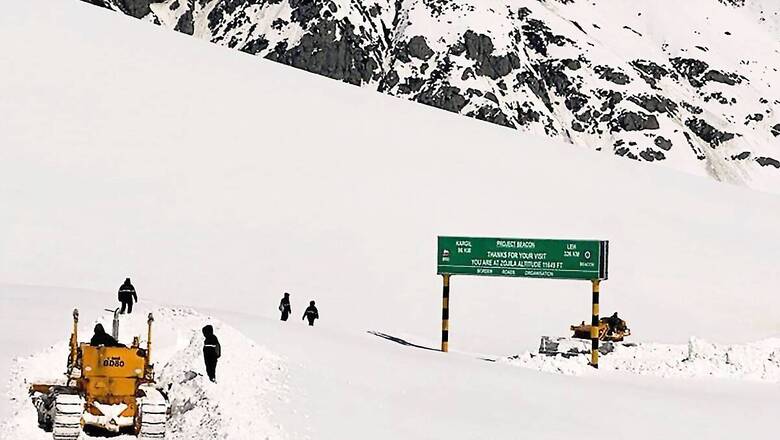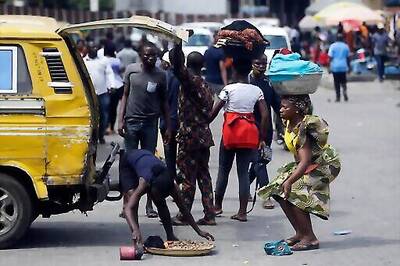
views
This is significant as the BRO’s budget stood at Rs 4,102 crore in 2013-14 under the UPA regime as opposed to Rs 7,737 crore in 2019-20. The Galwan Valley clash in May 2020 brought the Indo-China border issue to the forefront. Rajnath Singh took over as defence minister in 2019 and shifted the focus on the BRO.
In this financial year, India is projected to spend nearly double on border connectivity as compared to what it spent the previous year before the Galwan clash. In 2022-23, the budget expenditure of BRO reached a record high of Rs 12,340 crore.
Progress of the projects is on an upswing as well. As per details with News18, the BRO has constructed 3,700 km of roads as well as 266 bridges of a total length of 17,411 metres since April 2019. While India had built 4,422 km of border roads between 2008 and 2015 at 632 km per year, the pace has increased to 856 km per year with 6,848 km of roads built between 2015 and 2023.
#Exclusive | In 2023, 16 passes were opened ahead of previous years in record time, saving enormous funds in terms of air sustenance of cut off areas apart from immense economic and strategic advantages@AmanKayamHai_ shares more details @SakshiLitoriya_ | #ModiGovt pic.twitter.com/ZVjJ4R4W3b— News18 (@CNNnews18) August 14, 2023
A massive jump has been seen in the construction of bridges at 3,066 m per year built between 2015 and 2023, up 2.5 times from the 2008-2015 period.
Tunnels helping forces reach borders
Another game-changer has been the rapid construction of tunnels by the BRO since 2019. While only two tunnels were completed by the BRO before 2019, four tunnels have been completed in the second term of the Modi-led government; 10 more tunnels are under construction and seven tunnels are in the planning stage. The completed tunnels are Sonapur Tunnel in Meghalaya, Theng Tunnel in Sikkim, Atal Tunnel in Himachal Pradesh, Chamba Tunnel in Uttarakhand and Nechiphu and Sela tunnels in Arunachal Pradesh.
The 10 tunnels under construction are in Arunachal Pradesh, Jammu and Kashmir, and Ladakh. Seven more tunnels are being planned in Ladakh, Himachal Pradesh and Sikkim – namely, Key La Tunnel, Hamboting La Tunnel, Saser La Tunnel, Tanglang La Tunnel, Lachung La Tunnel, Baralacha La Tunnel and Donkyala Tunnel.
Key passes opened in record time
India depends on air operations to reach cut-off border areas in J&K as well as Ladakh because many crucial passes close in winter. But this year, there was an extended opening of the crucial Zojila axis till January 6, and it was opened for traffic on March 16 in just 68 days.
The Razdan pass in Gurez Valley was also opened in just 58 days while the Manali-Sarchu axis opened in a record time in March, almost two months in advance. The BRO’s efforts to open 16 such passes in record time not only helped save an enormous amount but, in terms of air sustenance to cut-off areas, brought economic and strategic advantages.
An alternate connectivity to sub-sector north in Ladakh has also been activated. An advanced airfield at Nyoma is also coming up.
Projects galore
A total of 90 infrastructure projects comprising 64 bridges and 21 roads have been dedicated to the nation in 2023, so far. This number will soon surpass the record number of 103 BRO projects last year. Among the most challenging has been the construction of a bridge in Sikkim at an altitude of 11,000 feet near Bhutan and connectivity of the southernmost panchayat of India, Laxmi Nagar, in Great Nicobar Island by establishing a crossing over Galatheya river. Work on a permanent steel bridge over Galatheya has also commenced.
Behind the special invite to BRO’s members for Independence Day to recognise their work could be the prime minister’s special visit to a BRO attachment earlier this year. He had stayed overnight at the BRO’s detachment at India’s last village, Mana, in Uttarakhand. The story of India’s remarkable border connectivity journey in the last four years could finally get its due mention from Red Fort.

















Comments
0 comment